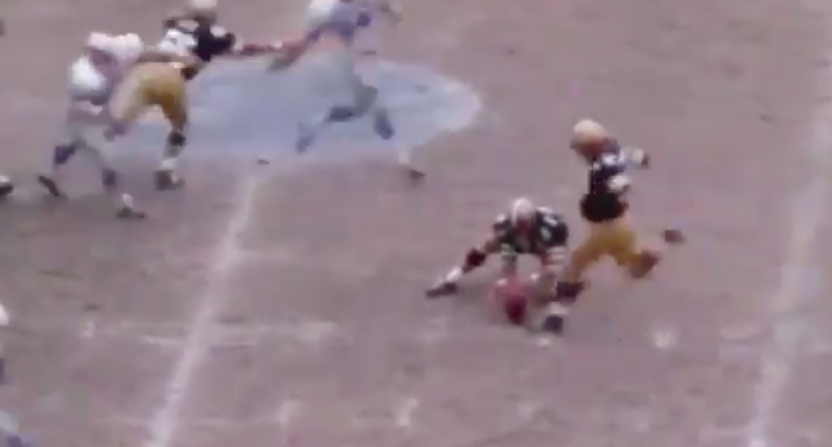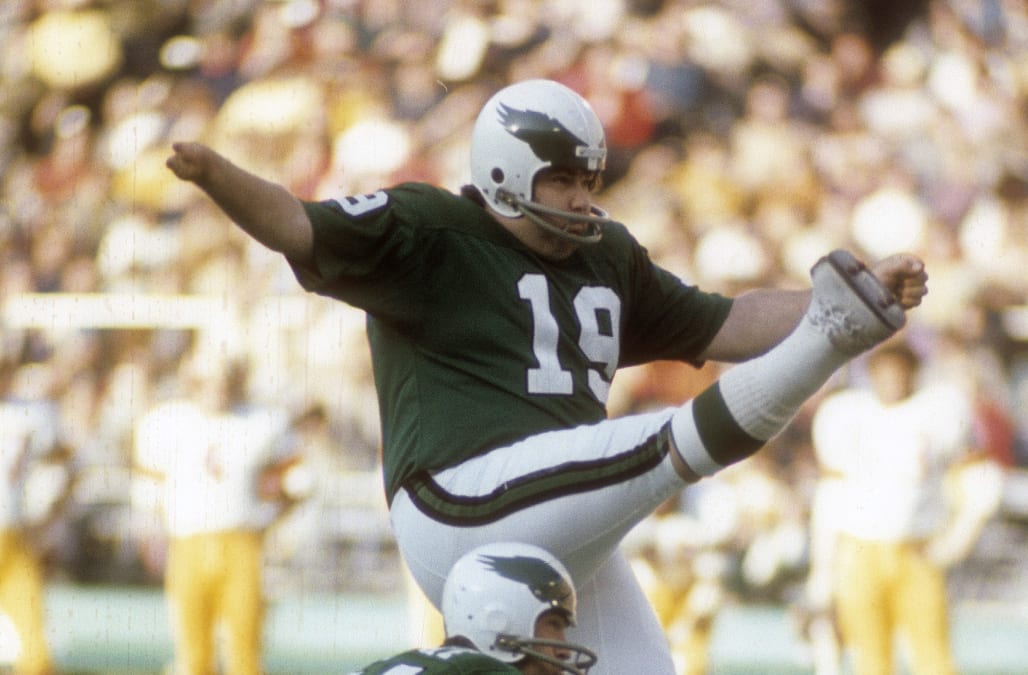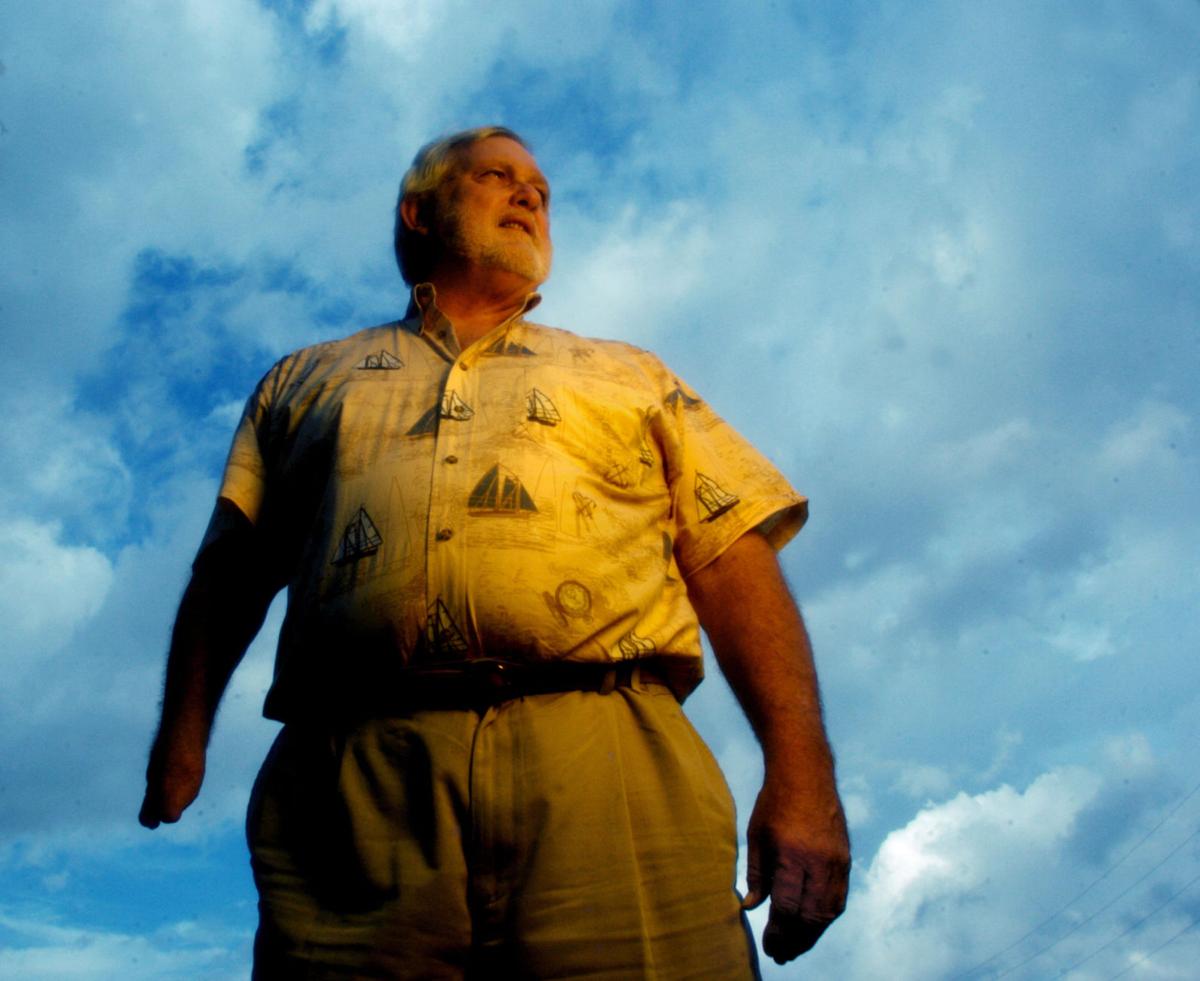The history of sports is loaded with unlikely heroes. Tom Dempsey was less likely than most. But sports also proves that the unlikely is not impossible.
Thomas John Dempsey was born on January 12, 1947 in Milwaukee, and grew up outside San Diego in Encinitas, California. He was born with no fingers on his right hand, and no toes on his right foot. He had to wear a special "half shoe," and he seemed unlikely to become a sports legend.
But he went out for the football team at San Dieguito Academy, and made it as a placekicker, wearing a different special shoe, whose flat front seemed to make kicking easier. He continued to wear it at nearby Palomar College, and into the NFL.
Opposing players claimed that it made things easier for him. This had previously happened with Ben Agajanian, who had lost his toes (but kept the rest of his foot) in a work accident, but still kicked in the NFL with a flat-fronted shoe. Agajanian challenged other kickers to try wearing his shoe, but none did. In Dempsey's case, none could, and he just took the comments in stride.
He was not selected in the 1969 NFL Draft, but was signed as a free agent by the New Orleans Saints. While soccer-style, side-approaching and instep-kicking kickers had begun to appear in the 1960s, Dempsey was still of the straight-ahead variety using the big toe, or the flat surface he had in place of a big toe. He was named to the Pro Bowl as a rookie.
On November 8, 1970, the Saints were playing the Detroit Lions at Tulane Stadium, and trailed 17-16 with time for one more play. The early Saints were terrible: They had debuted in 1967, and were 13-34-2 in their brief history, including 1-5-1 that season. Tom Fears, the Hall of Fame receiver for the Los Angeles Rams who had been named their 1st head coach, had just been fired, and this was their 1st game under J.D. Roberts, who finished out that season and lasted just 2 more.
At this point, the NFL had the goalposts on the goal line. And the record for the longest field goal was 56 yards, by Bert Rechichar of the Baltimore Colts in 1953. In the 17 years since, no one had even attempted a field goal longer than that. It was the kind of stunt that could only be done at the end of the 1st half or the end of the game, for fear of giving the opposition great field position.
The Saints were on their own 44-yard line. Their quarterback was Billy Kilmer. Two years later, Kilmer would take the Washington Redskins to the NFC Championship and Super Bowl VII. But, at this point, he was best remembered as a single-wing quarterback at UCLA, and not a great passer. The idea of Kilmer flinging the ball 56 yards for a touchdown did not fill Roberts with confidence.
But Dempsey, who had kicked a 55-yarder the year before, thought he could make it, and convinced Roberts to let him try a field goal from a distance far beyond that from which anyone had yet had the guts to try. Not even in the freewheeling, recently wrapped-up AFL.
This was in New Orleans, a city below sea level. It was on real grass, not artificial turf, and this was the middle of the season, so the field was in bad shape. (Tulane Stadium would get artificial turf the next season.) There was no kicking tee: In the NFL, that's only legal for kickoffs. There was game-winning pressure. Years later, a scientist hired by ESPN determined that the flat front of Dempsey's half-shoe may actually have made the kick less likely to be good. His only advantage was a slight wind behind him.
What's more, he decided he'd actually have a better chance if the placement were an additional yard back, 8 yards instead of the legally-mandated 7, making the kick 63 yards.
Dempsey faced the enclosed north end of Tulane Stadium's semicircle. Jackie Burkett snapped the ball, and it was low. Holder Joe Scarpati had trouble with it, but set it down properly. Dempsey sent the ball straight on, and it flew, and flew, and flew...
And it perfectly split the uprights, good by a full 3 yards. Final score: Saints 19, Lions 17.
There is surviving videotape of the kick, but it's in bad shape. You're better off looking at NFL Films' version. Unfortunately, both are from the press box on the west side of the stadium, so the view is sideways. There seems to be no surviving footage that shows the kick straight-on, either from the front or the rear.
"I was more concerned about kicking it straight, because I felt I could handle the distance," Dempsey said. "I hit it sweet."
The stunning kick was the highlight of not just the Saints' season -- they wouldn't win another game, finishing 2-11-1 -- but, arguably, their entire history until their Super Bowl season of 2009-10.
The next season, 1971, Dempsey was traded to the Philadelphia Eagles, and he led the NFL in field goal percentage, 70.4 percent, kicking a 54-yarder. He spent 4 seasons with them, the 1st 3 with those awful white helmets with green wings, before they went back to the traditional white (or silver) wings with green helmets for 1974. He spent the 1975 and 1976 seasons with the Los Angeles Rams, 1977 with the Houston Oilers, and 1978 and 1979 with the Buffalo Bills, before retiring.
In 1974, the NFL moved the goal posts from the goal line to the end line, at the back of the end zone. From that point onward, a 63-yard field goal would be made not at your own 37, but your own 47. In 1977, the NFL added the "Tom Dempsey Rule": "Any shoe that is worn by a player with an artificial limb on his kicking leg must have a kicking surface that conforms to that of a normal kicking shoe." Dempsey was still active, so he was "grandfathered in," and allowed to continue using his flat-fronted shoe.
He finished his career making 252 out of 282 extra points, or 89.4 percent; and 159 of 258 field goals, or 61.6 percent. (Maybe 63 would have been appropriate, but he wasn't quite that good.) He tried 39 field goals from 50 yards or longer, and made 12 of them, an astounding percentage for the time.
He was elected to the Saints' team Hall of Fame. He has never been elected to the Pro Football Hall of Fame in Canton, Ohio -- only 2 pure kickers, as opposed to pre-1970 kickers who also played other positions, have been: Jan Stenerud and Morten Andersen -- but the shoe he wore for the record-setting kick is on display there.
Dempsey's record stood alone until 1998, when Jason Elam of the Denver Broncos tied it. It was tied again in 2011, by Sebastian Janikowski of the Oakland Raiders. Both of these kicks came in the mile-high air of Denver. In 2012, David Akers, then with the San Francisco 49ers, hit a 63-yarder against the Green Bay Packers, in a city that's 581 feet above sea level.
On December 8, 2013, 43 years after Dempsey set the record, Matt Prater of the Broncos broke it, kicking a 64-yard field goal to end a half against the Lions, the same team against whom Dempsey's kick was made. This, too, was in Denver. I remind you that Dempsey kicked his 63-yarder below sea level.
On October 7, 2018, in Charlotte, North Carolina, 761 feet above sea level, Graham Gano did something no kicker had done since Dempsey: Kick a game-winning field goal 63 yards or more. He did so to give the Carolina Panthers a 33-31 win against the New York Giants. Afterward, he told the media that he always wanted to kick one that far to win a game, just like Dempsey had. Dempsey heard about it, and sent him an autographed kicking tee.
The aforementioned Sebastian Janikowski now holds the career record for most field goals of at least 50 yards, 53.
Following his career, Dempsey returned to New Orleans, to the suburb of Metairie, with a wife named Carlene, and they had 3 children: Daughters Ashley and Meghan, and son Toby. He worked as a salesman for an oil company, and then Saints owner Tom Benson, who owned a string of car dealerships, hired him to run one.
In 2005, the Dempsey house was flooded as a result of Hurricane Katrina. He said, "The hurricane flooded me out of a lot of memorabilia, but it can't flood out the memories."
But the memories would go: In 2013, he revealed he was suffering from dementia. A scan showed 3 holes in his brain. This is not unusual for a football player, especially from his era, but it is unusual for a kicker, a position with considerably less physical contact, especially to the head.
But it wasn't dementia that would end up ending the life of Tom Dempsey. He had been taken to a senior residence in New Orleans, and he was 1 of 15 residents who tested positive for the coronavirus. He died yesterday, April 4, 2020, at the age of 73.
Joe Scarpati, who held the kick, is now 73. Born in Brooklyn, he grew up in Scotch Plains, Union County, New Jersey, played at North Carolina State, and played 6 seasons as a safety with the Eagles, before playing for the Saints in 1970, and it turned out to be his last season, due to a knee injury.
Jackie Burkett, the center-linebacker who snapped the ball, was born in Alabama and grew up on the nearby Florida Panhandle (sometimes nicknamed "Floribama" or "the Redneck Riviera"), was an All-American at Auburn, played both center and linebacker for the Baltimore Colts from 1960 to 1966, was an original Saint in 1967, played for the Dallas Cowboys in 1968 and 1969, and returned to the Saints in 1970. As with Scarpati, it would be his last season. He died in 2017, at age 80.
Sunday, April 5, 2020
Subscribe to:
Post Comments (Atom)




No comments:
Post a Comment